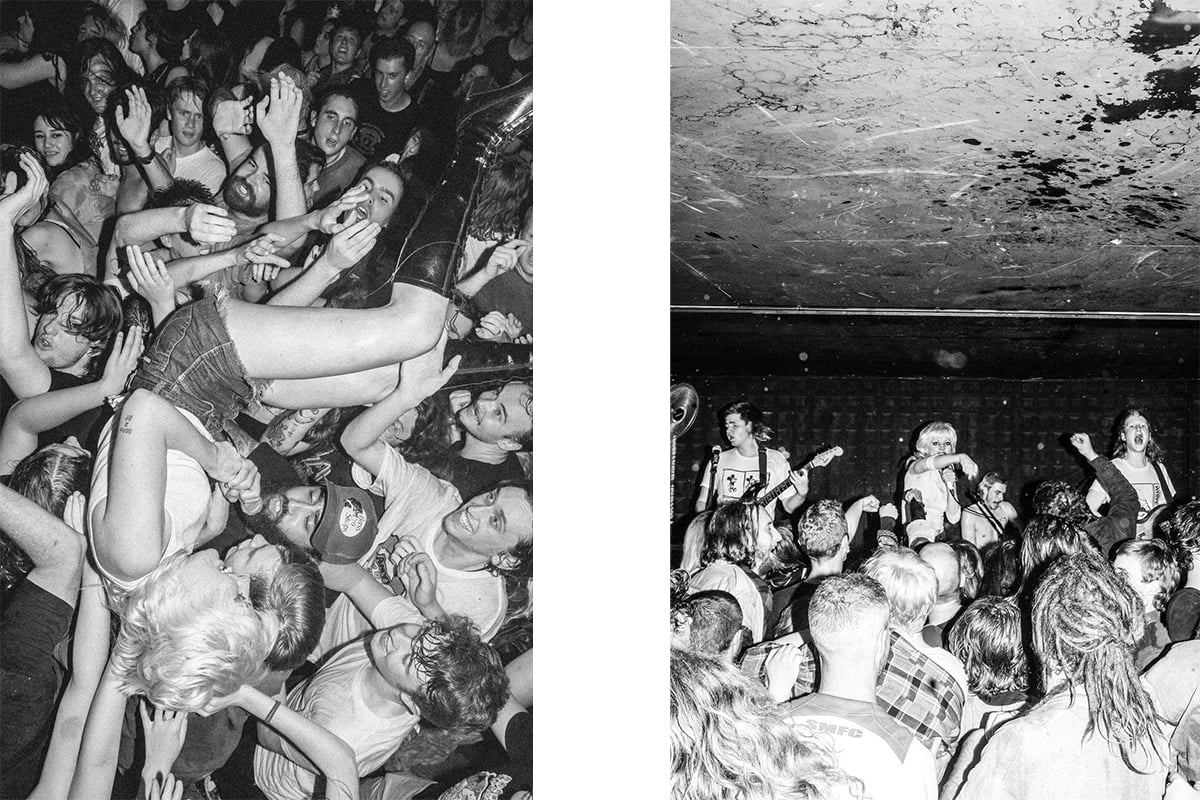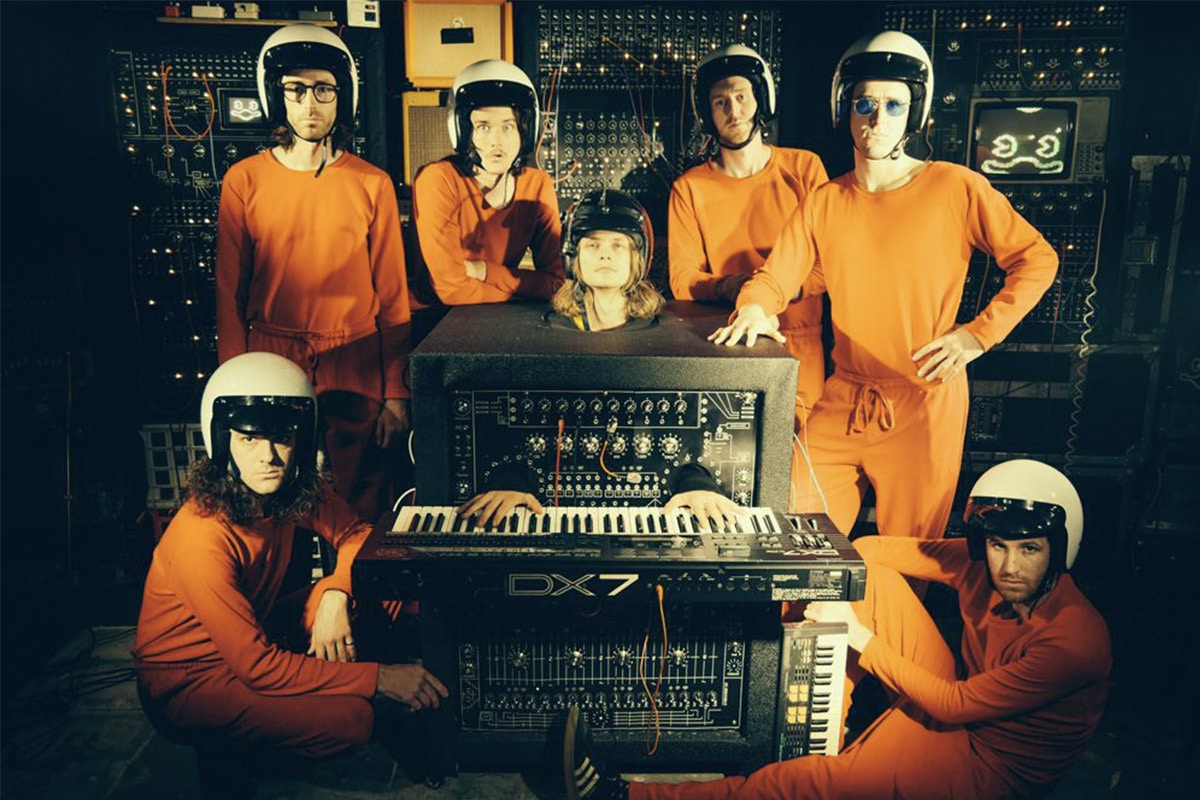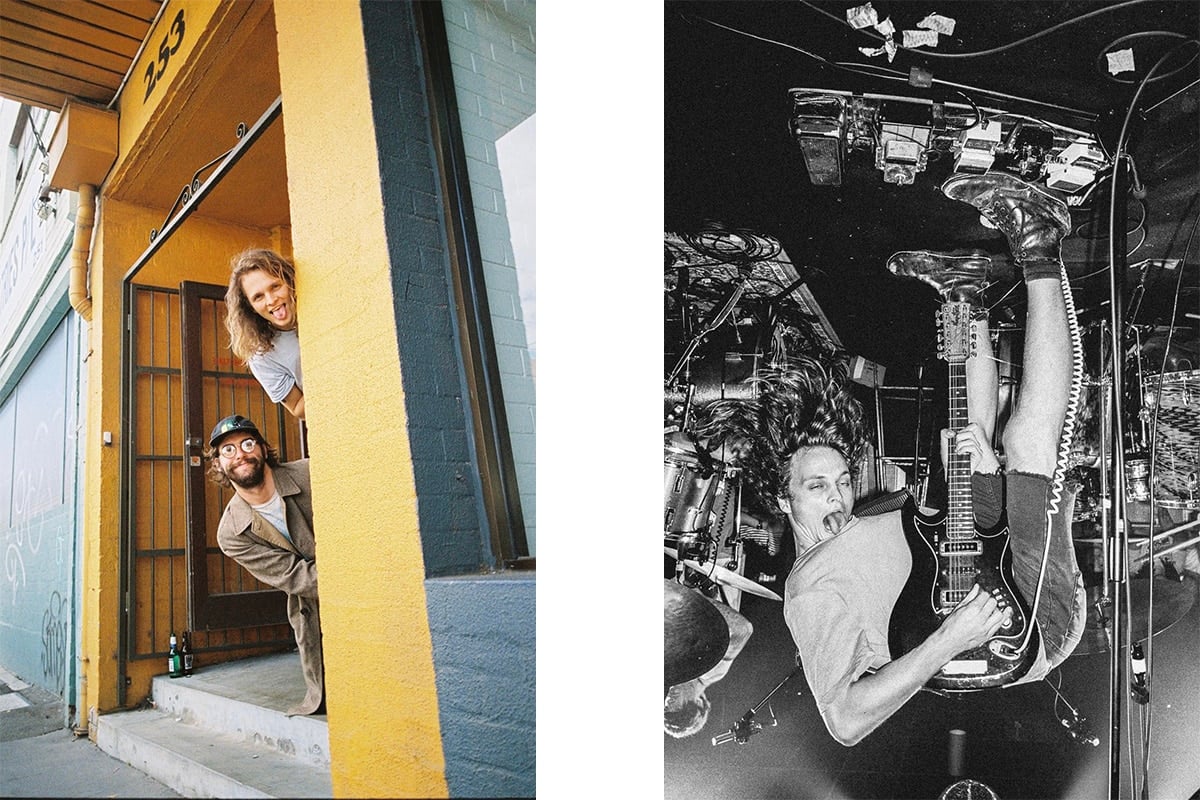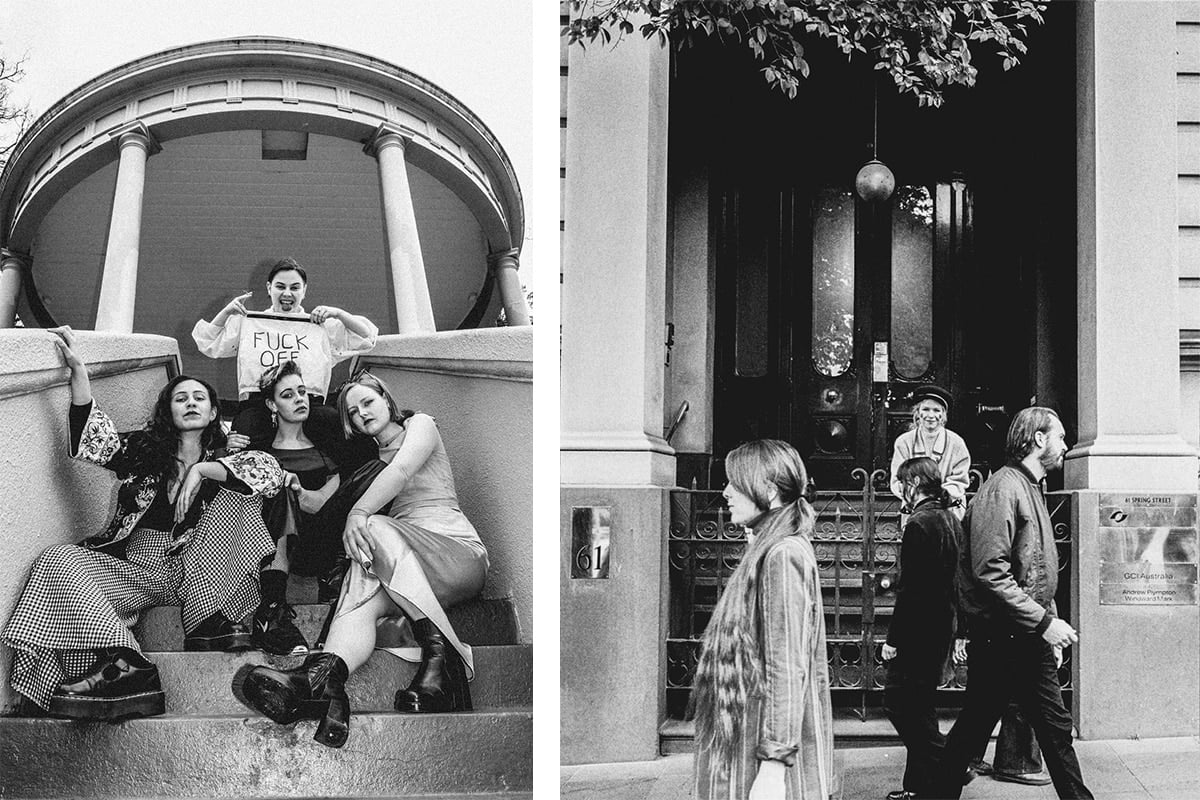
On any given night in 2013, Jamie Wdziekonski could be found staking out a spot closest to the stage. The venues were small and casual, which meant there was no photo pit and no flash restrictions. He was following the sound of his favourite bands – King Gizzard and the Lizard Wizard, The Murlocs, Kikagaku Moyo – who were not the names they are now, and more importantly he was there to study them through his lens. Come 6am, he would be sorting plastic bottles and food scraps in a basement garbage facility to fund film, developing and international travel to document the bands overseas, but those moments made it all worth it.
10 years later and the photographer has built an archive of photos worthy of an exhibition. So it only makes sense that Wdziekonski has one. Opening on May 5 at NGBE Gallery, For The Record is Wdziekonski's first solo show and is an extension of the Do-It-Yourself attitude he loves and lives by. Featuring album covers, tour images and behind the scenes footage shot over the course of a decade, For The Record is one man's love letter to Melbourne's music scene. On the eve of opening night, RUSSH caught up with Jamie Wdziekonski to discuss the early days of shooting bands, community and creativity. Find our conversation, below.

In a way, you've captured an industry in flux. Was there anything that stood out to you seeing a decade's worth of work grouped together like this?
I guess the main thing is the progress all the bands have made over the years. I met Kikagaku Moyo when they played their first show outside of Tokyo in Melbourne 2013. Fast forward – we just finished doing a final world tour together last year and they’re going on indefinite hiatus after 10 years of playing. It’s really nice to look back at meeting 10 years ago and all the tiny little coincidences that led them to play at The Gasometer in Naarm.
It’s one of those things, life can be as trippy as you want it to be – as in you can believe everything is already written for you in the stars and it’s moments like these that can feel like that. You can’t put your finger on why it feels so special but then you look back 10 years later and you’re like, 'Oh yeah, that was a magic moment in time'. Or a more realist outlook on it is you could say it’s all a nice coincidence. I’m somewhere in the middle of those two theories.
When I met Amyl and the Sniffers, they were opening for The Murlocs at Howler, and that was the biggest show they’d played at that point. Now they’re playing 1000 plus capacity rooms overseas. It’s so nice to see your friends do well and know that you’ve helped each other come up in the world. I would pay my own way to go on tour with Amyl and the Sniffers, King Gizzard and the Lizard Wizard and Kikagaku Moyo in the early days, so when they got to a level where they could afford to bring me along it felt like those early years of working as a garbage man to save up coin for international tours had really paid off.
It was also really cool to watch Naarm make a name for itself in the music world overseas. All of a sudden there were eyes on bands releasing music from here.

How did you get your start photographing bands?
The first person I messaged was Ambrose Kenny-Smith. But honestly it was just a matter of taking my camera with me to gigs and taking photos – they were always smaller venues so there was no ‘no camera/no flash’ rules and there was no photo-pit. You just had to show up early enough to get a spot down the front and you could shoot the whole set if you wanted to.
Within the space of 6 months I had photographed The Black Angels, The Brian Jonestown Massacre, Kikagaku Moyo, King Gizzard and The Murlocs. I noticed the one thing that tied all these bands together was their approach to recording and releasing music was DIY, as opposed to going through a giant record label. The Black Angels used to put "rethink your preconceived notions, question authority and create other methods of survival" on the inside of their records. I feel like this sentiment and The Brian Jonestown Massacre played a huge role in my approach to photography and working with bands.
For me, Ondi Timoner’s documentary DIG! is the main inspiration behind documenting music. Watching that back in 2012, I couldn’t comprehend how she chose two (somewhat unknown) bands and followed them for seven years without knowing what was going to happen.
So I ran with this theme of DIY/psychedelic bands and looked around Naarm and found musicians that I liked and I would show up to all their gigs and eventually get to know the people in the band. Which is how I got invited to come sit in on recording sessions and do press photos for them. It all grew naturally as the friendships developed. I think that’s a really important thing to establish if you want to truly document someone. You have to build a relationship and trust for them to be comfortable to be their true selves in front of your lens without feeling judged or anything like that.
I’m just really lucky that I found bands like Amyl and The Sniffers, Kikagaku Moyo and King Gizzard when they were within their first 12 months of forming. It’s harder to start documenting a well known band if you haven’t got the relationship. You can understand why a band would feel uncomfortable taking a photographer on tour and sharing a van for 8-9-10 hours a day with someone they don’t know.

Why music? What keeps you coming back.
I’ve always loved music – and I’ve always loved showing people music. My work over the last 10 years has basically been a curated selection of bands that I dig. I guess I always had this sort of retrospect in the back of my mind. I wanted to see how long I could personally document these bands for. It would be cool to do another book like this in 10 years and see where we’re all at.
It feels nice to have your first show after 10 years of photographing music. It's special to look back on all these images now especially, when maybe seven to eight years ago they wouldn’t have meant so much?
Can you tell me about any salient memories you have from the tours, cover shoots, and behind the scenes.
My favourite covers I've shot in the book would be A Shrug Of The Shoulders by Traffik Island and The Passing Scene by Leah Senior.
For the Traffik Island cover, this was the first time someone gave me full reign on an album cover shoot; from concept, to shooting, to layout. I had the idea of spelling out the album title with paint on giant sheets of paper and photographing those sheets of paper individually in this old analogue B&W photo booth. I spent a couple days painting out the title then one night we took it down to the photobooth at Flinders Street Station and shot 35 plus film strips that night.

As for The Passing Scene, I’ve always been a big fan of Leah’s music, paintings and poetry, so it was a real honour to be able to shoot this cover for her.
We initially shot in the city with the idea of having people walk past her while she sits on a stoop. We got a few nice shots but it wasn’t there yet – people were actually too polite and kept stopping before they walked in front of my lens. So after that shoot I had the idea that we should come back but with a group of friends so we can have more control of the movement of people walking past Leah. We shot the cover photos which were then turned into a lenticular print (like those old 3D prints you’d get inside chip packets) that sat in the middle of the cover, so when you swayed the LP back and forth the people in the photographs were moving.

When I think of memories on tour, what comes to mind is my first time touring Europe with Kikagaku Moyo in 2016. I met them in Rotterdam on my birthday and we drove through Germany to Sweden then back down to Prague where they recorded Stone Garden at Faust Studios. This was back when their shows were a bit looser so there was a proper venue maybe every third or fourth show, but in between was a hippy commune somewhere in a Swedish national forest where Kikagaku played in a barn. There was a DIY psychfest in someone's basement. Back then we would sleep on promoters floors and they would cook us breakfast in the morning – European hospitality is the absolute best.

I love the time spent driving in a van together and although it’s a slog sometimes when you’re sitting for 12 hours of the day, that’s also when you get to know each other really well and share ideas and music you’re listening to. Seeing parts of the world you probably would have never gone on your own and - experiencing that with friends – it’s the best feeling in the world.

For The Record by Jamie Wdziekonski opens on May 5 at NGBE Gallery.




